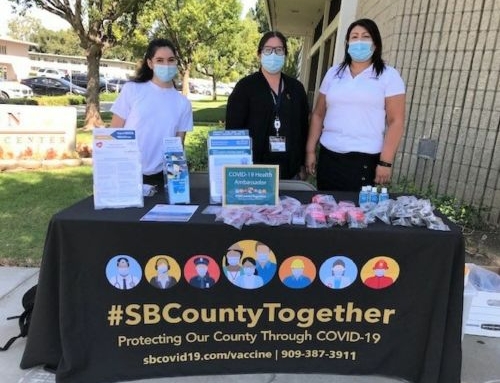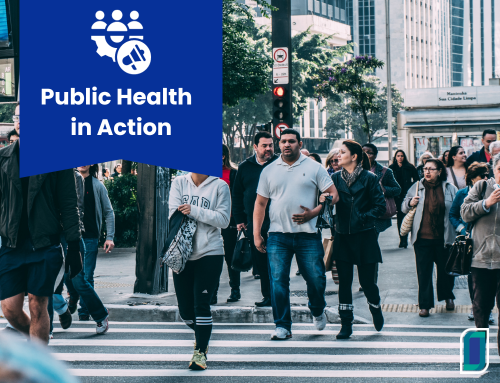Snapshot
The Douglas County Health Department (DCHD) offers free sexually transmitted disease (STD) testing, specifically CHL/GC testing via urine sample, in various community outreach locations. Sites have included concerts, health fairs, haunted houses, sporting events, and many other community events attractive to older teens and young adults. In addition to single, stand-alone events, DCHD developed partnerships with several community organizations to serve as regularly scheduled, weekly, or monthly testing sites. Sites include community centers, the main and branch facilities of the Omaha Public Library system, and Douglas County Corrections’ (DCC) minimum security programs, including Work Release, Day Reporting, and Probations. Testing at DCC sites is limited to court-ordered assignees. Testing at community centers and libraries is available to the general public and offered on weekly or monthly schedules, depending on site activity. These sites provide published schedules through various websites and social media. Testing hours range from two hours at regularly scheduled sites to the full event-length at concerts, health fairs, and other youth-attractive events. DCHD STD Outreach averages about 41 community opportunities for free testing every month, resulting in approximately 125 individuals being tested each month with +10 new positives and a positivity rate of 8%. Positive individuals are assigned to Disease Investigators (DI) for notification and treatment assurance, resulting in a >97%* treatment rate. All of this testing is in addition to the low/no cost services regularly provided by the DCHD STD Clinic.
*DCHD has monitored chlamydia and gonorrhea treatment (using Food and Drug Administration [FDA]-appropriate antibiotics) rates for a number of years. With ongoing STD DIS treatment assurance activities and continuous community education to clinicians, county-wide treatment rates have reached >97% annually. Electronic means of tracking treatment rates of outreach testing specifically is not yet available and rates provided are hand-tracked and calculated.
Problem Addressed
Douglas County’s rates of chlamydia and gonorrhea are comparable to – or even higher than – the per capita rates experienced in some larger cities in the U.S. For example, in 2016 Douglas County had a chlamydia rate of 668.1 per 100,000 and a gonorrhea rate of 255.6 per 100,000, which is higher than the rates in such cities as Chicago, Baltimore, and St. Louis. In fact, some zip codes in Omaha surpass the highest rates in the nation by three times the amount. Unfortunately, prior to the Affordable Care Act (ACA), third-party payers (insurers) were not required to cover STD screening costs and even after implementation of the ACA, clinicians often feared burdening patients with additional costs if non-diagnostic, CDC-recommended STD (i.e. screening) tests were done. The bulk of community screening was performed by free clinics serving lower socioeconomic and medically underinsured areas, resulting in racially disparate positivity rates for chlamydia and gonorrhea. Thus, in an economic environment where screening was not taking place, DCHD was challenged with reducing already high STD rates and determining disease prevalence. Compounding the problem of payer issues, gonorrhea and chlamydia testing required clinician-collected swab samples and laboratory detection via fastidious culture and fluorescent microscopy techniques.
Innovation Summary
The FDA approval and widespread acceptance of the Nucleic Acid Amplification Test (NAAT) allowed testing of new specimens and body sites, beginning with urine samples. Urine sample collection for STD testing does not require either an invasive exam or an on-site clinician, can be offered/performed in any site with restrooms nearby, and allowed DCHD to develop a new service: Non-traditional (NT) Testing for STDs.
Following much cross-sector negotiation and collaboration, DCHD began offering NT testing at large, one-time events (i.e. health fairs, sports contests, indoor and outdoor entertainment venues, or any site likely to attract teens and young adults). Incentives (such as free giveaways) for getting tested were piloted at some sites. In addition, education and condoms, as acceptable, were provided to participants at other sites. Per DCHD STD protocols, all individuals with positive test results were followed to assure treatment and elicit partner information. All investigations maintained patient confidentiality, assuring the community that this new DCHD testing approach was safe and reliable.
Individuals attending these one-time events were obviously present for reasons other than STD symptoms or concerns, and volunteered for free STD testing either due to incentives, if offered, or novelty. However, positivity rates from NT testing events were generally high, often 5-15%, suggesting that many young adults were at risk but asymptomatic and/or lacked access to or awareness of appropriate medical care. The fact that community health needs continually change and good public health programs must be dynamic and flexible, led to the expansion of NT testing to include the development of community partners/stakeholders to allow for and encourage community use of regularly scheduled (weekly or monthly) DCHD STD testing sites in youth-friendly locations.
In a quirk of fate, the Washington branch of the Omaha Public Library system, which is located in the area’s highest STD-rated zip code, scheduled a teen-health education event that included STD transmission and prevention information. A church located across the street from the library opened its doors for DCHD to offer STD urine testing to interested teens following the educational event. More than 40 teens walked across the street for STD testing, resulting in a 15% positivity rate. With this stunning outcome, DCHD encouraged Washington Branch Library to become DCHD’s first STD NT testing site to offer testing on a regular weekly basis. The courage of this location and the lack of public push-back broke ground for other library branches, community centers, correctional facilities, college campuses, and other community venues, to offer space and advertising for ongoing, regularly scheduled free DCHD NT STD testing.
Outcomes & Impact
Numeric results from DCHD NT STD testing clearly demonstrate community impact and value in very unanticipated usage, positivity, and treatment numbers/rates. In the project pilot year, 2010, 1858 tests were done, 103 positives identified, and a 5.5% positivity rate calculated. Treatment of 88 of these infections was recorded in a hand-compiled log sheet showing a treatment rate of >85%. With continuous program evaluation and improvement, as well as site consistency, treatment assurance, and maintenance of individual confidentiality, numbers show that 2071 individuals were tested in 2016, resulting in identifying 170 infected, and >154 receiving appropriate treatment. The 2010-2016 comparison indicates that site usage increased by only 11.5%. But, numbers of positive individuals identified through NT testing increased 65%, and numbers effectively treated increased by 75%. It appears that increasing the number of free testing sites and continuous sexual health education in the community has encouraged more behaviorally high-risk individuals to recognize the health and emotional costs of STD infection, and to seek STD testing at these convenient sites, and to follow up with treatment if needed.
DCHD now offers 40-50 opportunities for free STD testing, including at both one-time educational or entertainment events, and at regularly scheduled sessions at common sites, all promoted and published on the web and through social media. In a region known for being politically and socially conservative, the most unusual of the scheduled sites has been the Omaha Public Library system. DCHD now provides STD testing regularly in the main library and at nine of its branches. Several branches have added easily accessible condom bowls to provide free condoms to the community, and a few have developed educational and activity programming specifically for teens. Collaborating with DCHD, the Washington Branch Library took the leadership role in piloting STD-related services, and at all library meetings has presented the successes, challenges, community responses, and accolades of their innovations. Challenged but inspired to expand services, other branches have gradually joined the NT testing program. In most months, 15-25 different sessions of free STD testing are offered through the public library system. In many areas, libraries are respected as educational leaders of the community. Adding STD prevention activities, such as testing and education, into libraries encourages community approval and community awareness of the STD problem, making this easily adapted project well worth replication.
Challenges & Barriers
The DCHD Outreach STD Testing Program faced some initial challenges, including funding for laboratory testing and adequate staffing for testing at larger events. In response to the need for community testing, and in light of the community outcry regarding this serious problem, the Nebraska Department of Health and Human Services (NE DHHS) allocated some fiscal year-end unspent funds toward the purchase of a large quantity of urine-sample NAAT-STD tests from the Nebraska Public Health Laboratory (NPHL). Since that time, DCHD has applied for and received significant funding from two local philanthropic organizations to continue to provide and expand outreach STD testing in Omaha.
To staff of the larger testing sites, DCHD Outreach creatively met the anticipated staffing shortages by obtaining student volunteers from the two local medical schools and the numerous local schools of nursing and other medical professions. Schools jumped at the opportunity for students to gain hands-on community care experience, and instructors provided student participants with community service hours and credit. Based on these new partnerships, DCHD STD increased student opportunities and now offers internships and other volunteer activities to selected secondary school and college-level students.
In addition to the challenge of continued funding, new challenges will always include finding new events and locations to offer free STD testing. Whether at one-time or regularly scheduled events, new sites rekindle community awareness of the STD problem. The teenage population is completely fluid, with young teens entering this cohort daily. To help teens become successful and productive adults, parents, teachers, caregivers, and others who work with them need continual updates and reminders about the STD problems experienced by this group.
One additional barrier/need identified at DCHD has been the need for urine specimen, point-of-care test kits for detecting chlamydia and gonorrhea infections, in either gender, that are rapid (while clients wait), CLIA-waived, portable (without large equipment to transport and/or requirements for frequent QA testing), and public health affordable.
Lessons Learned
The first lesson learned at DCHD was to “dream big!” Without having big dreams, DCHD would have never thought to accomplish the things in place today. Douglas County is in a fairly conservative state and all too often the ideas for outreach regarding STD and sexual health are shunned. The lesson learned from this is to maintain confidentiality practices above and beyond, frequently stressing to clients and contacts how this is done, and how important it is considered to be. DCHD has developed a dependable, medically knowledgeable pool of volunteers or sources of volunteer recruitment, which has been invaluable when resources are low.
Sustainability
In order to sustain the outreach testing program, DCHD frequently evaluates and improves the procedures, locations, and community needs. In order to complete this quality improvement cycle, DCHC solicits and applies community input that could improve the outreach program. DCHD has been able to gain community buy-in for outreach testing, which thus helps to show a need for the program. DCHD presents program information with statistics, and discusses the challenges and accomplishments to individuals across the state, as well as nationally. By demonstrating the need for these outreach testing venues, DCHD hopes to continually receive funding locally and nationally to support the program. The county is also fortunate to have private philanthropic funders, which has allowed an increase in the number of screening opportunities, and provides additional outreach opportunities.
Contributors

The mission of the Douglas County Health Department is to promote and protect the public’s health in order to create a healthy and resilient community of nearly half a million people in Eastern Nebraska.





